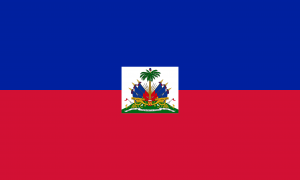Language/Haitian/Culture/Haitian-Dance
| ◀️ Haitian Music Styles — Previous Lesson |
As a Haitian language teacher, I always emphasize the importance of understanding and appreciating the culture of the language we are learning. In today's lesson, we will explore the fascinating world of Haitian dance.
Haiti is well known for its vibrant music and dance scene, which is a mix of French, African, and Taino influences. Haitian dance is deeply rooted in history and has been an integral part of the country's cultural heritage for centuries. From religious ceremonies to social gatherings, dance is used to express a range of emotions and to connect with others in the community.
After mastering this lesson, these related pages might interest you: Haitian Holidays & Haiti Timeline.
Traditional Haitian Dance Styles
Haiti has a wide range of dance styles, each with its own unique characteristics and history. Here are three of the most popular traditional dance styles still celebrated today:
Yanvalou
Yanvalou is a dance style that originated in West Africa and was brought to Haiti during the transatlantic slave trade. It is often performed during Vodou religious ceremonies as a way to pay homage to the spirits. This dance style is characterized by slow, rhythmic movements that are meant to evoke a spiritual connection with the divine. Yanvalou dancers wear white clothing and move in a circle, swaying gently to the pulsating rhythm of the drums.
Petwo
Petwo is a fiery and energetic dance style that originated in Haiti during the colonial period. It was created by enslaved Africans who rebelled against their French masters and used dance to express their resistance. Petwo is a highly spirited dance style that is characterized by sharp, quick movements and a vigorous tempo. Dancers wear brightly colored clothing and move in a circular formation while stamping their feet and shouting chants.
Banda
Banda is a dance style that originated in Haiti's rural farming communities and was used to celebrate the harvest season. It is a playful and joyful dance that is characterized by lively and energetic movements. Banda dancers wear brightly colored costumes and move in a group formation, jumping and clapping as they dance.
Haitian dance is often accompanied by live music, with traditional instruments such as the tambourine, drums, and maracas being used to create an infectious beat that gets everyone on their feet. The music and dance are closely intertwined, with each element influencing the other to create a harmonious and exhilarating experience.
Conclusion
In conclusion, Haitian dance is an integral part of the country's cultural heritage and has a rich history that is deeply intertwined with its people's experiences. By understanding and appreciating Haitian dance, we can gain a deeper insight into the country's culture and history. I hope this lesson has inspired you to explore more of the amazing world of Haitian dance.
Well done on mastering this lesson! Don't miss these related pages to expand your knowledge: Haitian Music Styles & Haitian Painters.
Videos
Traditional Haitian Dance w/ Maxine Montilus - Nago pt. 1 || TLC ...
Traditional Haitian Dance w/ Maxine Montilus - Kongo pt. 1 || TLC ...
Haitian Konpa / Kompa Dance by Haitian Cultural Club at the 2015 ...
Konpa : Dance to Late Night Ting :: Kompa / Zouk ( Haitian Dance ...
Traditional Haitian Dance w/ Maxine Montilus - Nago pt. 2 || TLC ...
Other Lessons
- Haitian Geography
- Haitian Painters
- Haitian Music Styles
- Haiti Timeline
- Haitian Holidays
- Haitian Independence
Sources
| ◀️ Haitian Music Styles — Previous Lesson |

